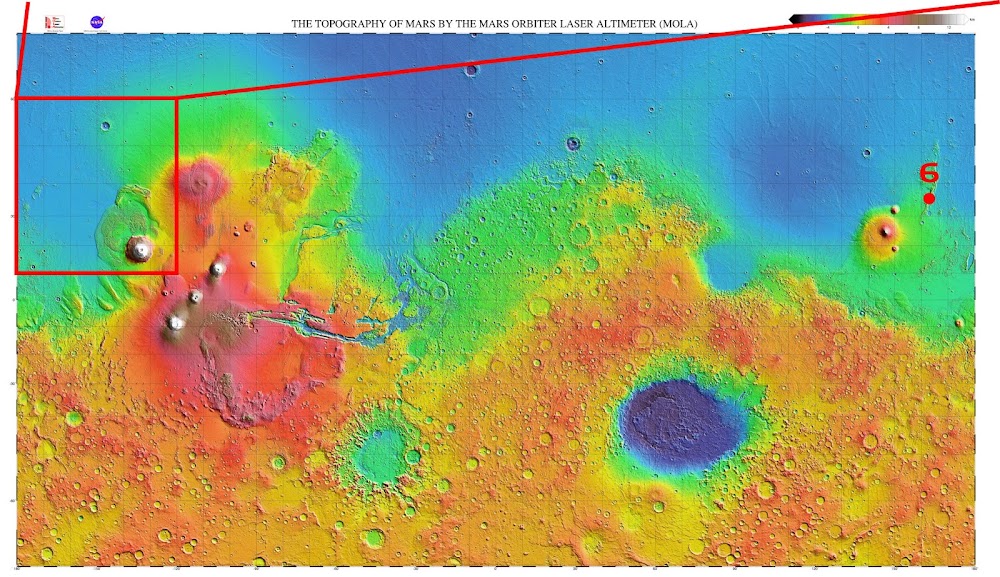Since then SpaceX has conducted several workshops with the Mars science community to evaluate and narrow the list of candidate landing sites. All the sites must fit several criteria:
- close to significant deposits of water/ice, a required resource for in situ propellant production and a consumable to support habitation;
- elevation below -2 km (with respect to the MOLA geoid) that can support the delivery of large payloads, with -3 km preferred;
- latitude must be <40° for solar power and thermal management, and closer to the equator is desirable;
- multiple separate landing locations spaced within a few km of each other, to support the multiple missions needed to grow an outpost;
- slopes should be <5° over a 10 m length scale and the chance of impacting a rock greater than 0.5 m high (1 m diameter) should be <5%;
- landing site must be radar reflective to enable measurement of the distance to the surface, and it must be load bearing to support the spacecraft at touchdown.
Recently an abstract with the conclusions has been published (the results of the study will be presented in two weeks, at the 52nd Lunar and Planetary Science Conference), pointing out 4 prime and 3 secondary potential Starship landing sites selected for further study and located in Phlegra Montes, Erebus Montes and Southern Arcadia Planitia:
- PM-1 has the lowest latitude and elevation of the Phlegra Montes sites, a clear association with LDAs (local ice deposits expressed as lobate debris aprons), well developed polygons (one of the indicators of ice-related morphologies), and has the highest SWIM (Subsurface Water Ice Mapping) score for geomorphic indicators of ice;
- AP-1 (Arcadia Planitia) appears to be one of the safest sites and has a moderate combined SWIM score for ice;
- AP-9 has the thickest ice from radar returns (of the Arcadia Planitia sites) and geomorphology indicating shallow ice. It has the highest combined SWIM score for ice, but appears slightly rocky and rough;
- EM-16 has a clear association with an LDA with nearby brain terrain and the strongest radar return for shallow ice and the highest combined SWIM score of the Erebus Montes sites;
- AP-8 (Arcadia Planitia) appears to be one of the safest sites and has the highest neutron and combined SWIM scores for ice;
- EM-15 (Erebus Montes) is associated with a prominent but less extensive LDA, has well developed polygons, nearby brain terrain and appears smooth;
- PM-7 is adjacent to lineated valley fill (attributed to glacial flow) and appears to be the safest of the Phlegra sites.
We highlighted selected ★ prime and ★ secondary sites on the map:




